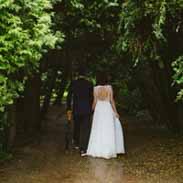Motor Learning and Control – Ch 5 – Flashcards
Unlock all answers in this set
Unlock answersquestion
How do the models of stages of learning assist practitioners?
answer
Defines the needs of their learners throughout the learning process and enable the practitioner to select appropriate instructional activities.
question
Three considerations concerning models of stages of learning.
answer
Transitions between the learning stages are not clearly defined, a learner can be in different stages for different skills, and stages are not dependent on age.
question
Model of learning stages that suggest learners pass through three distinct stages, that are defined by the behavioral tendencies learners display
answer
Fitts and Posner's Three-Stage Model
question
Three stages of the Fits and Posner's Three-Stage Model
answer
Cognitive, Associative, and Autonomous Stages
question
Stage of Fits and Posner's Three-Stage Model in which the learner is first introduced to the new motor skill and their primary task is to develop an understanding of the movement.
answer
Cognitive Stage
question
Characteristics of a learner in the cognitive stage learning
answer
Movements appear choppy, inconsistent performance, lack of synchronization, and high attentional demand.
question
Practitioner's role in the cognitive stage of learning
answer
Verbal instruction and demonstrations
question
Stage of Fits and Posner's Three-Stage Model that is characterized by a marked improvement in performance and the learner becomes committed to refining one particular movement pattern.
answer
Associative Stage
question
Characteristics of a learner in the associative stage
answer
Performance becomes more consistent, timing improves, attentional demands decrease, and refinement of error detection and correction abilities
question
Practitioner's role in the associative stage of learning
answer
Developing constructive practice experiences
question
Final stage of Fits and Posner's Three-Stage Model that is reached through countless hours of practice.
answer
Autonomous Stage
question
Characteristics of a learner in the autonomous stage of learning
answer
Performance becomes automated, few errors, consistent, strategic decision making and detect and correct errors.
question
Practitioner's role in the autonomous stage of learning
answer
Acting as a motivator
question
Model of stage of learning that emphasized the learner's goal and the influence of task and environmental characteristics on that goal.
answer
Gentile's Two-Stage Model
question
Two stages of Gentile's Two-Stage Model
answer
"Getting the idea of the movement and fixation/diversification stages
question
First stage of learning in Gentile's Two-Stage Model in which the learner is introduced to a new motor skill.
answer
"Getting the idea of the movement" Stage
question
Primary goals of the learner during the "Getting the idea of the movement" stage of Gentile's Two-Stage Model.
answer
Development of ability to discriminate between regulator and non-regulatory conditions and development of basic movement pattern
question
Environmental conditions that specify the movement characteristics necessary to perform the task.
answer
Regulatory Conditions
question
Factors that are not inherently related to producing the appropriate motor response.
answer
Non-regulatory Conditions
question
Second and final stage of Gentile's Two-Stage Model, in which the learner has acquired a general idea of requisite movement.
answer
Fixation/Diversification Stage
question
Primary goals of the learning during the fixation/diversification stage of Gentile's Two-Stage Model.
answer
Refinement of the movement pattern (fixation) and adaptation of movement to conform to ever-changing environmental demands (diversification)
question
Reducing the available degrees of freedom to a more manageable quantity in order to accomplish a tasks goal and is often seen in novice or inexperienced performers.
answer
Freezing the Degrees of Freedom
question
Freezing the degrees of freedom results in what type of movement pattern?
answer
Stiff, rigid, and inefficiently timed movements
question
Freeing the degrees of freedom changes the movement pattern in what way?
answer
Smoother, faster, and more closely resembling the correct movement.
question
How are movement patterns different from experienced performers and inexperienced performers?
answer
Increase in coordination and control, more fluid muscle activity, more efficient energy expenditure, and increased consistency.
question
Measures the effectiveness of training or instructional strategies by indicating improvement and inferring consistency.
answer
Performance Curve
question
Four patterns that a performance curve may follow.
answer
Negatively Accelerating Curve, Positively Accelerating Curve, Linear Curve, and S-shaped Curve.
question
Most common performance curve where individuals tend to demonstrate a large initial improvement in performance, that slows later in practice.
answer
Negatively Accelerating Curve
question
Performance curve that is characterized by little initial improvement with larger gains occurring later.
answer
Positively Accelerating Curve
question
Performance curve that reflects a direct relationship between performance and time.
answer
Linear Curve
question
Performance curve that is a combination of the negative and positively accelerating curves.
answer
S-shaped Curve
question
Limitations of performance curves
answer
Measures represent temporary effects, cannot establish relative permanence, and is calculated through the means of several trials.
question
Tests used to infer that a relatively permanent change in a performance has occurred.
answer
Retention and transfer tests
question
Test that measures the persistence of improved skill performance and is given after a period in which the learner has not engaged in practice.
answer
Retention Test
question
Test that is administered directly following a practice period and is used to find out what a learner can do after practicing a skill.
answer
Post-test
question
Test that measures the degree to which a learner can adapt the practice skill to a different performance situation and is used to distinguish between temporary and permanent performance changes.
answer
Transfer Test
question
A period of time during the learning process in which no overt changes in performance occur.
answer
Performance Plateau



